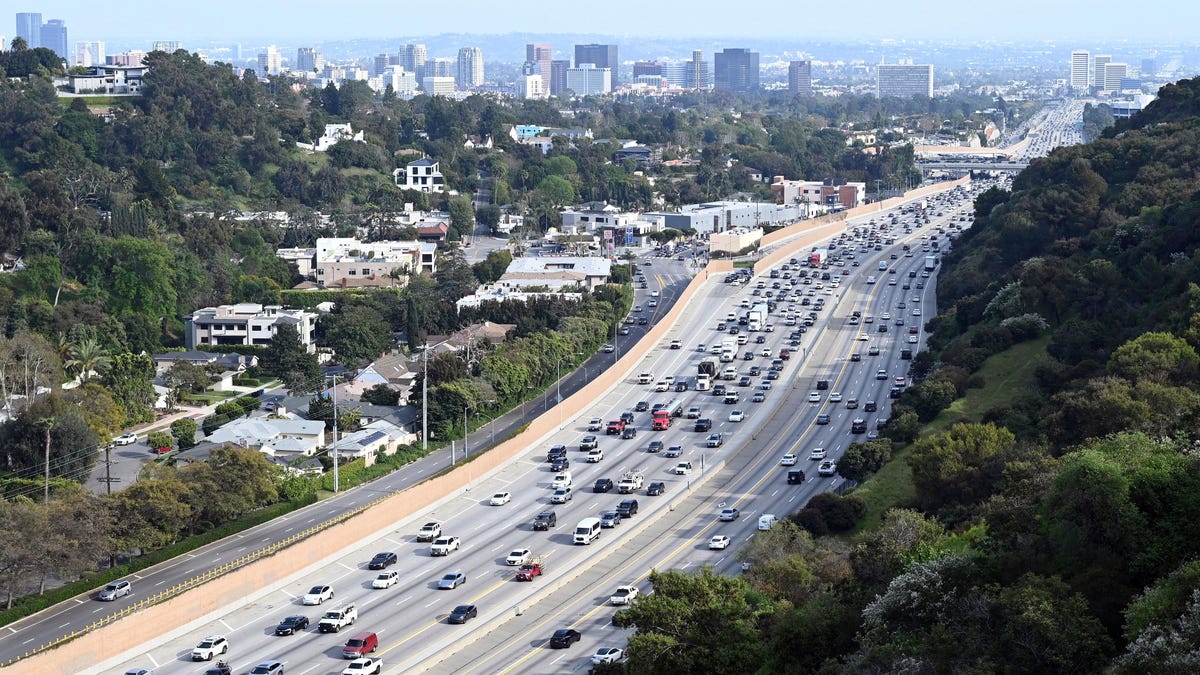California’s EV sales continue to rise. In 2023 the state had a 17 percent increase in EV market share; that was up nearly 30 percent from 2022. But when you look deeper into the numbers you’ll see there’s a problem: EVs are mostly being purchased by wealthier, college-educated Californians. The state hopes to get lower income residents into EVs with its new Clean Cars 4 All program, but it’s going to put those residents through the wringer before they see any value from it.
Back when the program was the Clean Vehicle Rebate Project the process was simple: if you wanted in on the EV rebates, you applied and waited for the rebate check to come in the mail. But the CVRP ended in late 2023 when the state chose to revamp the project to focus on getting lower income households into EVs. Now called Clean Cars 4 All, it’s similar to the old Cash For Clunkers program in the late ’00’s/early 2010s, in which residents trade in their old gas-powered car for a clean EV. If you don’t want a car you also have the option to use the program for “alternative mobility options” like public transit and even e-bikes.
You can get up to $9,500 towards a clean vehicle or up to $7,500 if you choose a mobility option; the higher incentives are for the lowest incomes that live in communities the state describes as disadvantaged. But as these things go when it comes time to help those who really need it, the whole process is a hassle.
Before you even apply you have to check the eligibility requirements. Income limits range from a low of $32,805 for a single person household to just over $202,000 for a household with eight people. If you meet the income requirements you then have to check whether or not the gas vehicle you’re turning in is eligible. The main requirements are:
- You have to actually own the car. There can’t be a lienholder on the title, meaning you can’t still be making payments on it.
- Has to be operational. It can’t be some bucket that’s been in your driveway or backyard.
- Has to be powered by either gas or diesel fuel.
- Have a GVWR of 10,000 pounds or less
- Must be 2007 model year or older
Anything newer than 2007 won’t qualify. The vehicle also has to be registered with the DMV and have any and all fees paid. Oh and don’t think about double dipping with the program. Only one owner or joint owner of a vehicle per household can use the program. You also have to live within the jurisdiction of the South Coast Air Quality Management District, which covers most of Southern California.
If you’re squared away with all of that, now you can fill out the application to apply. You’ll need things like proof of income and a copy of the vehicle documents that show it’s been in operation in the state the last two years. Now you submit your application and play the waiting game right? Not so fast. Once your application is completed, it goes to an assigned case manager for review. But that should be a quick process right? Think again. The program says that because of the number of applications they’re receiving, it could be between four and six months before a case manager even looks at your application. Only then, if you’re determined to be eligible by the case manager and the information you submitted, you’ll be emailed a pre-approval letter.
The clock is ticking at this point as the program only gives those that have been approved 90 days to find a vehicle. You can’t just go to any dealer you want either. Vehicles can only be purchased from a list of 50 pre-approved dealerships located across Southern California that work with the program. Once you find a vehicle, it’s hands off for you. The dealer will submit a sales contract to your case manager so the incentive voucher can be approved. And we all know how well dealers stay on top of things like this.
But the case manager isn’t the one approving the voucher. The case manager sends the sales contract, vehicle info and voucher to the South Coast Air Quality Management District who oversees the entire program. This makes you wonder, if towards the end of the process the case manager isn’t even the one that’s giving the final approval, what’s the point of the case manager then? If the voucher is approved by the district, you’ll then be notified to pick up your new, used clean vehicle. After that, your case manager will contact you to set up turning in the old, gas powered car.
None of this is to say the program doesn’t have good intentions. Equitable clean vehicle access has to happen for the EV transition to be successful. And incentivizing lower income individuals to help them get an EV is a big help. But the amount of things people will have to go through just to get an incentive — one that didn’t require the same amount of red tape when it was given to wealthier households — will turn some off and end up not helping the very people it was supposedly designed to help.

